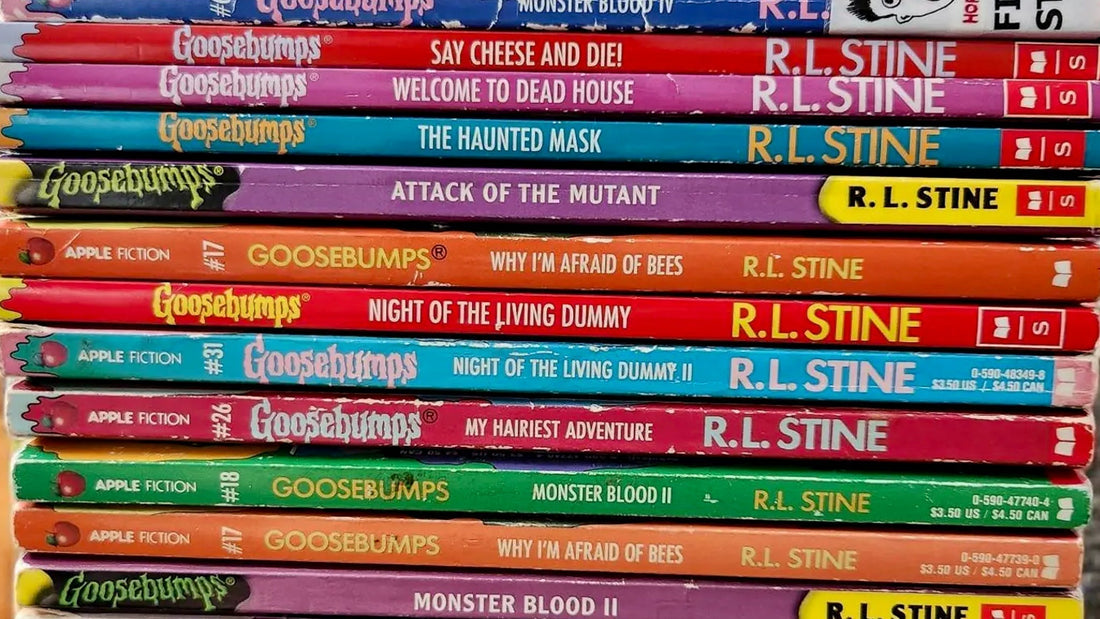
Dreadtime Reading – the importance of fear fiction
There’s a moment every parent recognises — when small hands reach for a story that feels just a bit… dark. A book with a shadowy forest, whispering ghosts in dark corners, or a manipulative wolf who is overtly friendly. Our instinct might be to steer them gently back toward something safer, brighter, more cheerful. But should we?
Any classic bookish kid growing up in the 90s will remember with spine-tingling endearment R. L. Steine’s, “Goosebumps” series. For the best part of a year, 10-year-old me devoured every single one in the hour before bedtime, turning the pages with sweaty hands and a dry mouth. Looking back at the books now, I have an appreciation for their variety (there are over 200 books) and extreme readability. The monsters, wildly imaginative, don’t condescend to a 10-year-old’s sensibilities. Instead they offer a kind of escapism that is necessary for us all.
Children love to be scared, and they’re far braver than adults at calling up and confronting those primeval threats that lurk in dark corners. There’s a fundamental need to experience something ‘other’ and unsettling. That which can make us gasp or raise the hairs on our necks, excites and challenges us.
In children’s fiction, monsters, witches and a panoply of other gruesome beasties supply an abundance of that same basic fear which is so lip-chewingly addictive. There’s no better refuge from reality than to be submerged in a thrilling story. But those escapist frights are at the same time safe. If the scares are getting too nerve wracking, the reader can look up and is instantly reassured. The comforting familiar surrounds them and keeps the perils on the page.
Scary stories have been told to children for as long as stories have existed. Long before picture books and bedtime routines, people gathered around fires to share tales that warned, thrilled, and explained the unexplainable. What these stories offered — and still offer — is not simply fright, but a framework. They give children a way to explore uncertainty and danger in a world that doesn’t always feel safe.
When a child listens to a story with a little darkness in it, they’re not just being entertained. They’re rehearsing how to feel fear — and to move through it. In the space of a few pages, they can experience suspense, tension, surprise, and relief. They discover that bad things can happen, but that good can find a way back. This emotional journey strengthens empathy and resilience. It helps them learn that fear is not something to run from, but something that can be named, faced, and survived.
Importantly, “scary” doesn’t always mean gory or grim. Sometimes it’s simply a story that unsettles — where a familiar world tilts slightly, and nothing is quite as it seems. These moments of uncertainty stretch the imagination. They teach children that stories, like life, contain shadows as well as light.
That said, what unsettles one child might delight another. Knowing your reader — their temperament, their tolerance for tension — is key. A story that gives one child the thrill of a rollercoaster might genuinely worry another. As with all books, the magic lies in matching the right story to the right reader at the right moment.
So, should children be allowed to read scary stories? Absolutely — with care, curiosity, and conversation. When we read alongside them, or talk about what made their hearts beat faster, we give them the language to describe big feelings and the reassurance that they are safe.
After all, the world can be a little frightening at times. Books are one of the safest places to practice being brave.
With that in mind, I’ve put together a book list of Halloween stories for different age-ranges that will be sure to capture the excitement, imagination and just-right frights of the season. Perfect for sharing, reading aloud, or curling up with in the spooky month of October.
